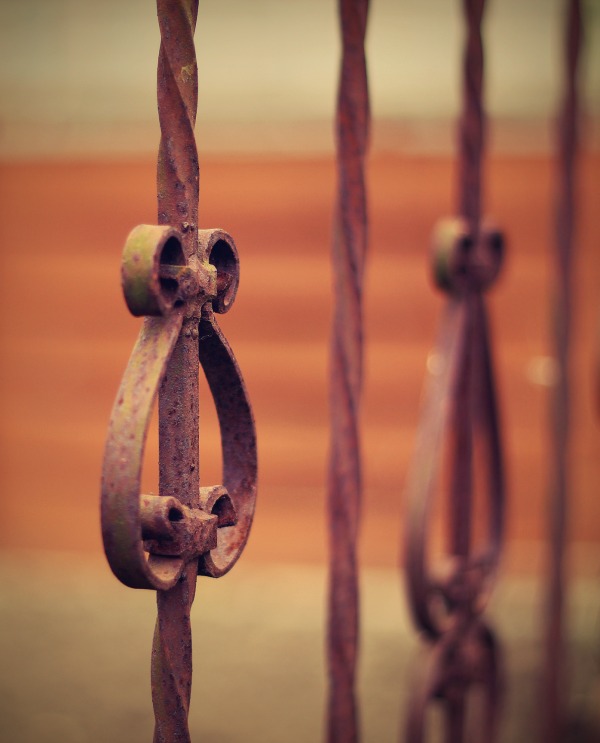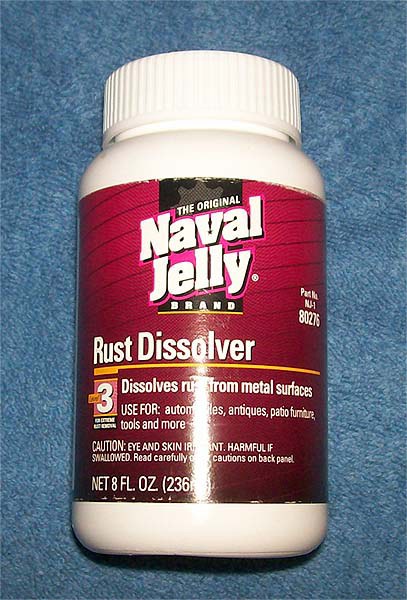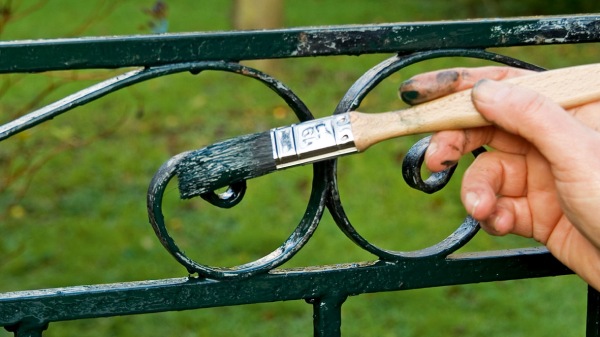Rust is more than just a visual problem. It is said that rust is like the disease of cancer in the world of metals. It deteriorates the metallic material from inside. Usually, decorative elements such as railing or other ornamental pieces often act as the focal point of the house. But in many cases, rust formation take place and these decor pieces eventually tend to lose their smart faces. Do you have rusted railing in your house? Are they getting withered fast? Don’t worry. You have come to the right place to get a repair solution for the rusted rail of your house.
Iron is a robust, enduring, cost-effective and easily available metal. It is also malleable and ductile. It can be casted into different shapes and designs by rolling and molding according to your requirement. Moreover, it enhances the look of your home, office, or any other places where it is used. But, formation of rust on iron is a great drawback of this metal. When iron comes in contact with air and moisture, it produces iron oxide which is known as rust. Deposition of rust on railing corrodes the railing further and ultimately causes damages to it. So, the removal of rust or repairing a rusted railing is essential to restore/protect the railing.
Repair Rusted Railing

By following some simple steps, you can repair your rusted railing.
(a) Cleaning Rust
Remember, no painting protection will survive long if you do not remove rust from the original metallic surface. Hence cleaning is one of the vital most important facets of repairing rusted railings.
You can use thermal techniques, abrasives, or chemicals to remove the rust from a railing.
01. Abrasive Blasting Method

In abrasive blasting method, different abrasive mediums are used to treat or remove rust formed on the surface of a railing. According to the Department of Culture, Heritage and Gaeltacht, some common abrasive mediums used are steel grit, crushed glass, steel shot, glass bead, silicon carbide, walnut shell, ceramic grit, corn cob, aluminum-oxide, as well as plastic and copper slag.
You can use an appropriate abrasive medium and pass it through a blasting nozzle using compressed air. Different abrasive medium types are available with a great variety of shape, density, and hardness to treat the rust on a railing. Before selecting the abrasive medium, you can take a sample test of abrasive blasting procedure. Traditionally, an abrasive procedure is known as sand blasting method and same can be done with a sandpaper manually. However, nowadays, in many states sandblasting is prohibited or not preferred as it is harmful to the health of the person doing it.
02. Wire Brushing

Wire brushing is done using simple power tool, which are mostly wired. In case of using power tools, you should apply gentle touch for the removal of rust so that the surface below the rust remains intact. You should clean rust at narrow spaces or corners using a hacksaw blade. Ensure that the remaining rust is removed by rubbing with emery cloth or synthetic steel wool as an abrasive pad. Remove rust at tough corners and areas by using abrasive materials with sand which are flexible to fold into different convenient shapes. Wet a rag with mineral spirit and complete the cleaning procedure of rust on the abraded surface of a railing.
03. Use Rust Remover Chemicals

You can choose a chemical containing phosphoric acid such as Naval Jelly (rust-removal product from Loctite, a company that specializes in sealants, adhesives, and surface treatment) to remove rust on a railing. First of all, scrap the dirt and loose scales on the railing. Then, coat the railing thickly with Naval Jelly using a disposable brush. Leave it for 10 minutes, and after that you can clear the residue with a rag. Wash out the remaining residue with water according to the instructions given by the specific chemical manufacturer for the removal of rust from a railing.
Depending on the density of the rust layer, you may follow this procedure repeatedly, till rust is removed totally. According to the Westminster City Council, this chemical cleaning method uses a concentration of chemicals, which are potentially dangerous to health and can easily damage the skin and most surfaces on accidental contact.
04. Use Tannic Acid
Lastly, you can go for the rust converter option which is based on tannic acid. The tannin or tannic acid reacts with the iron oxide or rust and it converts rust into iron tannate which is a corrosion product in blue/black colour.
Our mentor, ‘Shri Mahadev Desai’ (CMD of Sthapati Designers & Consultant PVT LTD, the leading multidisciplinary consultancy organization of India since 40 Year) as a consultant to various industrial plants says that “No paint would survive if you don’t remove the rust carefully. At such times though the appearance will improve but the deterioration in the form of corrosion will continue.”
(b) Repairing
Repairing is highly solicited rectify any damage caused by rust on a railing.
Several methods are followed to repair a railing. These are:
01. Ensuring Tightness and Repair Loose Fasteners
After removal of rust on a railing, you should check all joint of railing using screws and bolts. If there is any loose joint, immediately you have to tight the fasteners with the help of a wrench or a screw driver. Count on the tips mentioned below while tightening the fasteners to ensure safety for the railing:
Replace the bolts or screws if they are not sufficient to ensure the tightness of the joint of the railing.
If the existing screws are not enough to tighten the joint area, you should select a larger screw or a wall anchor to ensure the tight fittings of the joint.
02. Ensuring Tightness and Repair Loose Fasteners
After removal of rust on a railing, you should check all joint of railing using screws and bolts. If there is any loose joint, immediately you have to tight the fasteners with the help of a wrench or a screw driver. Count on the tips mentioned below while tightening the fasteners to ensure safety for the railing:
Replace the bolts or screws if they are not sufficient to ensure the tightness of the joint of the railing.
If the existing screws are not enough to tighten the joint area, you should select a larger screw or a wall anchor to ensure the tight fittings of the joint.
03. Apply Lubricants to the Rusted Screws and Bolts
If there is a need to tight or loose the rusted screws and bolts, you can apply lubricating oil and leave it for some time. Then, you will get to remove the rusted screws and bolts by yourselves. You may get to buy lubricating oil from any hardware shop. This oil is available with an aerosol attached to plastic straw which is useful to spray the oil into the deeper part of the joint.
04. Eliminate Damaged Bottoms of a Railing and Insert New Post Properly
You can cut off the damaged bottoms of a railing using an electric saw. Then, spray a rust-proof primer on the cutting edges and insert new post properly.
05. Fill with Epoxy for Fixing a Similar Sized Fastener to Replace a Damage Fastener
If you want to replace a similar sized damaged fastener, you should blow out the unwanted loose particles from the anchor hole. Then, fill up the hole with epoxy and then follow the steps given below before the adhesive dries.
Place the fixture to insert the fastener within the anchor hole which is already filled with epoxy. Install nail by hammering within the anchor.
Clean excess epoxy using a putty knife. Leave the epoxy to get fixed permanently.
(c) Coating with Primer
Coating with primer is an essential method to prevent oxidation of metal which usually leads to rusting and corrosion of the metal. Moreover, chemical component in paint is less binding with metal than primer and it will flake off easily if you do not use primer. The metal gets exposed to moisture after flaking of paint and the oxidation of metal will start immediately. If you use paint without coating of primer, microscopic gaps are left within the material. On the other hand, when you apply primer before paint, paint easily forms a bonding to the primer. Primer offers protection to the metal by preventing moisture to react with the same. Few metals like stainless steel do not require a primer coating because they are capable enough to prevent oxidation. Usually, wrought iron, mild steel, aluminum and galvanized steel are used for making railing, and these types of metals need to be coated with primer.

There are mainly three types of primer:
01. Oil-Based Primer
It is suitable for both the types of paints such as latex based paint and oil-based paints. Oil-based primers are used for interior and exterior surface area. Some types of oil-based primers can help in covering stains and prevent from showing the stains of nicotine, ink or water. They help to slow down or prevent cracking, peeling and blistering of paint.
02. Latex-Based Primer
It is water-based, fast drying and flexible. Latex-based primer is perfect for galvanized metal of railing and it is easy to clean.
03. Shellac Primer
It is one of the best options to block stains. Shellac primer is suitable for both the types of paints such as oil-based paint and latex based paints.
The essential tip for primer coating is that you should not wait for a long time to paint after primer coating on the metal railing. Check instruction on the primer container to know how and when to start painting your metal railing after primer dries completely.
(d) Painting
Choose paint depending on the type of metal surface:
The major paint types are:
01. General Spray Paints

These are very common type of paint and are also available in wide range of variety. These are:
- Primer: It works as the solid base for top coat and available in colours like grey, white, and red oxide.
- Glossy and Matte look: Usually, it is applied for top coating paints which create a shiny glossy look or a matte finish with comparatively dull look.
- Metallic look: It contains aluminum flakes of different sizes to produce a metallic look.
- Textured look: It offers a textured look and is made by mixing adhesive with a base paint. It ensures that it will not start flaking off fast.
- Heat resistant paint: It is suitable to cope up with high temperature and harsh environment.
02. Hammerite or Hammered Look Paint

It is perfect for painting a metal railing. You can apply it directly on a rusted railing, but it will work better if used after the removal of rust. There is no need to apply primer before using this paint.
03. Acrylic and Latex
Paint with acrylic and latex base is advantageous as it is helpful for producing a hard wearing and strong finish coating.
04. Enamel Paint

Enamel paint is a traditional way of painting in order to get a hard and glossy look of the applied surface. Follow the guideline provided by the manufacturer of the paint to get perfect coating of paint.
Conclusion:
Repairing wear and tear or some defects in design or construction has to be addressed first. However, if you don’t attend the root cause, the damages will resurface. Keeping that in view, thorough rust cleaning from the surface and sealing the source of leakage (if any) is of prime importance. Furthermore, if corrosion repairs are not rectified in time, the damages may escalate and at some point of time may become irreparable. So it is important to take care of the rusted rail as soon as possible the trouble is detected.
Also Read:
Repairing of Corrosion Damaged Concrete
15 House Cleaning Tips that can be Beneficial to Every Homeowner!
Image Courtesy – Image 2 – youtube, Image 3, Image 4, Image 5, Image 6, Image 8
Author Bio
Kakali Biswas – Kakali Biswas is a blogger and full-time mother. She loves to write on informative topics sharing her knowledge with the entire world. Her only goal in life is to always stay productive and happy.










